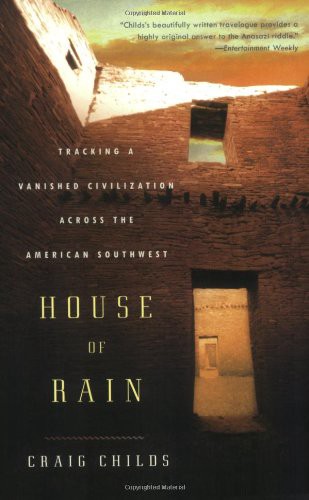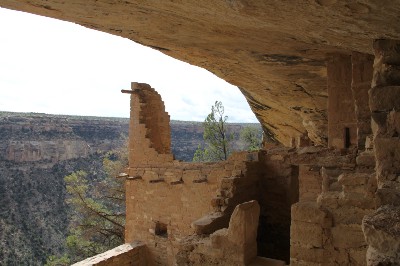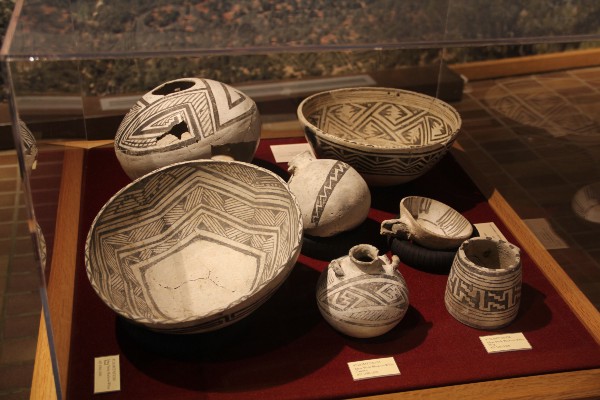House of Rain, by Craig Childs

Not long ago, I returned from a fantastic trip to the Southwest with old friends. We hiked and explored many of the key ruins of the Anasazi (or Ancient Puebloans, as is the currently accepted term) — Mesa Verde, Hovenweep and Chimney Rock, one of the northernmost outposts of the Chacoan empire. You can read more about our trip here.
Inspired by our trip and on the recommendation of my friend Thomas, I went after House of Rain, by Craig Childs, to gain more perspective on what we’d seen. House of Rain is ~500 page exploration of the world of the Anasazi. The Anasazi built a vast empire in the American Southwest with a complex culture, amazing cliff dwellings and stunning pottery, only to mysteriously disappear from the scene around 1300AD. Childs set out to explore, and perhaps solve, this mystery.

Awhile back there was a management school of thought called “Management by Walking Around”. Childs is from the “Archaeology by Walking Around” school. His (and others’) theory is that the Anasazi were an inherently nomadic people, in spite of the magnificent cliff dwellings they built. And his further assertion is that you can only really understand them by following them through the terrain. If you’ve ever been in the southwest, you know it’s a bleak, harsh, byzantine, but ultimately stunningly beautiful land, filled with mountains, rivers and a maze-like set of canyons littering the landscape. House of Rain is Child’s travelogue as he explores the vast landscape of the Southwest, mostly on foot and often at real personal danger. He starts at Chaco Canyon, the epicenter of the Chaco culture, then moves north to Colorado, east to Utah, South to Arizona, and eventually into Mexico. Along the way we’re treated to equal parts nature travelogue and deeply scholarly archaeology.
Childs is a modern day Indiana Jones — one moment he’s swimming a flash flood in Chaco Canyon, the next exploring the evolution of pottery patterns over time in a museum. One of the more recent discoveries is that the Chaco empire built roads in the desert running fifty miles or more in a straight line, connecting settlements with both roads as well as mountain-top signal fires straight out of a scene from the Lord of the Rings movie. Childs walks these roads and explores the canyons, and the beauty and desolation of the Southwest comes to light.

Pottery at the Anasazi Heritage Center, Utah
Along with his athletic explorations, Childs brings a deep knowledge of the scholarship of the southwest to bear on his tale. As he travels the southwest, he’s moving both through the migration paths of the Anasazi as well as moving through time. The Anasazi periods have very distinct pottery styles that identify region of origin, time of origin, even individual potters. Childs tells the story of the evolution of pottery and architecture over time and shows how it documents the migrations of the time. Materials sampling of pottery and human remains show pots and human remains that came from hundreds of miles away.
As the drought of the turn of the twelfth and thirteenth centuries made life ever more difficult for the Anasazi, migration and social upheaval increased greatly. It’s well documented that were mass murders, religious warfare and ritual cannibalism during that time. Childs relates the studies of Ernandes, that have shown a corn-only diet can lead to malnutrition, and in the extreme to OCD, aggression and even mystical states of ecstasy. It’s considered a possibility that the corn-only diet of religious priests may have led to documented mass sacrifices amongst the Aztecs, Toltecs, and the Anasazi. To quote Childs:
Ernandes did not leave the Southwest out of the study, mention- ting a fervor that swept the Anasazi landscape. Terribly disfigured
human skeletons have been found from that time, bones polished by
cooking, heads severed. The authors of this study believe that corn
could have been a factor — that dementia could have occurred on a
cultural level.
(The upheaval of the Southwest during this time of drought is an interesting phenomena given the drought that’s occurring today in the Southwest and California in particular.)
Childs book is a fascinating exploration of a little-known time and place in the history of the Americas. And if you live anywhere in the southwest, it’s right under your nose. As for Child’s solution to the mystery of the disappearance of the Anasazi? Well, you’ll have to read the book.
